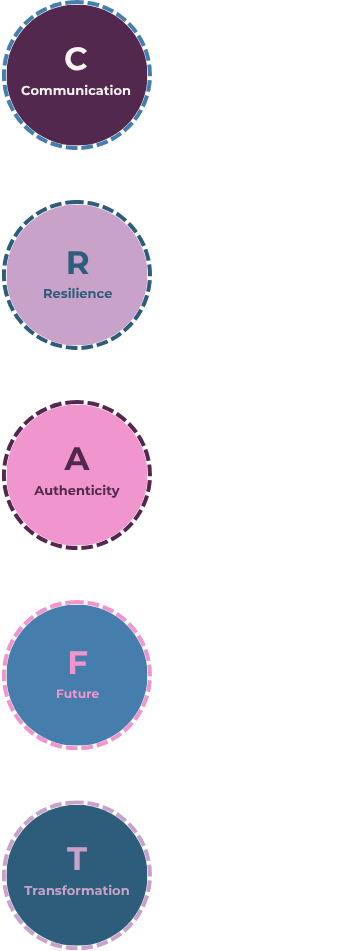A lot of new managers are thrown in at the deep end. They go from being an individual contributor to suddenly having people to manage, often without anyone clearly defining the role or what’s expected. That lack of clarity can lead to all sorts of problems, such as confusion, frustration, inconsistency, and burnout, both for the manager and their team members.
It’s a common issue. Smart, motivated people take on management roles for the first time and are left to figure it out for themselves. They don’t always make the transition effectively. They might cling to their previous individual contributor tasks or focus on the urgent day-to-day stuff but overlook the core people side of the role because no one’s made it clear what’s expected of them now.
Being a great people manager is about supporting, enabling, and growing others. And to do that well, managers need to know exactly what the role involves.
This blog will help you work that out, so you’ve got something to use when you’re promoting people to managers, onboarding new managers, developing existing ones, or hiring at manager level.
Step 1: What’s the Purpose of the Role?

Start by writing a sentence or two about why this role exists in your business.
Try asking yourself:
- Why does this role matter to the business?
- What are we expecting managers to take ownership of?
- What difference should a good manager make to their team?
- What do we want people to experience when they’re managed well here?
Examples:
- “At [Company], managers make sure their teams have what they need to do great work. They give direction, offer support, and help people grow.”
- “Our managers lead with care and clarity. They show our values in action, develop their teams, and make sure we deliver results together.”
- Here’s the one we use at Willow & Puddifoot: “At Willow & Puddifoot, managers play a vital role in creating happy, healthy, high-performing teams. They provide guidance and support to their team members and enable them to grow while delivering great results.”

Step 2: What Are Managers Responsible For?
The next step is to define what your managers are responsible for and the skills they’ll need to do that well. Getting clear on this makes it easier for them to know what’s expected, and easier for you to support their development, make decisions about training, and ensure consistency in promotion and performance conversations.
Here’s an example structure you can use to get started, based on our CRAFT™ leadership model. It covers five key areas:
| CRAFT™ Foundation | What It Means | Examples of Responsibilities |
| C – Communication | Managers talk and listen well. They keep people informed and make sure everyone’s heard. |
|
| R – Resilience | Managers stay calm under pressure and help their teams handle challenges. |
|
| A – Authenticity | Managers are real and trustworthy. They lead with honesty and self-awareness. |
|
| F – Future Focus | Managers think ahead and help others grow. |
|
| T – Transformation | Managers help their teams handle change and try new ways of working. |
|
What Skills Do They Need?
Once you know what you want managers to do, the next step is to think about the skills they need to do it well. These examples are a useful starting point for defining what good looks like. You can build on or adapt them to suit your context:
- Communication e.g. active listening, giving feedback, adapting communication style
- Resilience e.g. managing emotions, stress management, supporting wellbeing
- Authenticity e.g. self-awareness, empathy, consistency between words and actions
- Future Focus e.g. coaching, developing people, delegating, motivating people, goal setting
- Transformation e.g. adaptability, constructive challenge, navigating change, critical thinking
Step 3: What Expectations Will You Set for Managers?
 Now that you’ve defined the role and the skills needed, the next step is to decide what expectations you’re going to communicate to your managers. These expectations should cover both what managers are responsible for (tasks and outcomes), and how they are expected to behave day to day.
Now that you’ve defined the role and the skills needed, the next step is to decide what expectations you’re going to communicate to your managers. These expectations should cover both what managers are responsible for (tasks and outcomes), and how they are expected to behave day to day.
You might want to pull this together in a simple Manager Expectations document, which outlines the key responsibilities, expected behaviours, and support available. It doesn’t need to be long – just something practical and clear that gives managers a shared understanding of what “good” looks like.
Examples:
Communication
- Run regular 1:1s and team meetings
- Share key updates clearly and on time

- Listen well and stay curious
- Set clear performance expectations and follow up regularly
- Give regular, constructive feedback to help people grow
- Handle conflict constructively and encourage resolution
Resilience
- Monitor workloads
- Support wellbeing
- Stay calm under pressure and respond with care
Authenticity
- Lead by example and follow through on commitments
- Role model self-awareness and self-management
- Build trust and psychological safety through everyday interactions
- Make fair, timely decisions and communicate them clearly
- Create an inclusive environment where everyone feels respected
Future Focus
- Set clear goals and review progress regularly
- Delegate tasks based on strengths and development needs
- Support team development through coaching and feedback
- Motivate individuals and teams to progress and grow
- Address performance issues early and fairly
Transformation
- Identify and lead small changes to improve how the team works
- Encourage new ideas and test different approaches
- Challenge unhelpful norms and encourage better ways of working
- Apply critical thinking to solve problems and make improvements
Final Tips
- Keep it short and useful. Don’t overcomplicate it.
- Use it when promoting people to manager, during onboarding, or for development and performance conversations.
If you’re thinking about training or developing your managers, getting clear on the role is a great place to start and hopefully you’ve found this helpful. It’s not the only thing to consider however, so we’ve created a quick and simple Are You Ready? quiz to help you think through everything that goes into setting managers up for success.
Take the Are Your Ready to Train Your Managers quiz now
Please feel free to get in touch if you would like any help with this.
 About the Author
About the Author
Louise Puddifoot is the founder of Willow & Puddifoot, a training provider for organisations looking to strengthen their leadership and management capability. With a vibrant learning and development career spanning over two decades, Louise’s expertise lies in leadership and management development. She is passionate about enabling potential and catalysing growth in individuals and businesses alike.